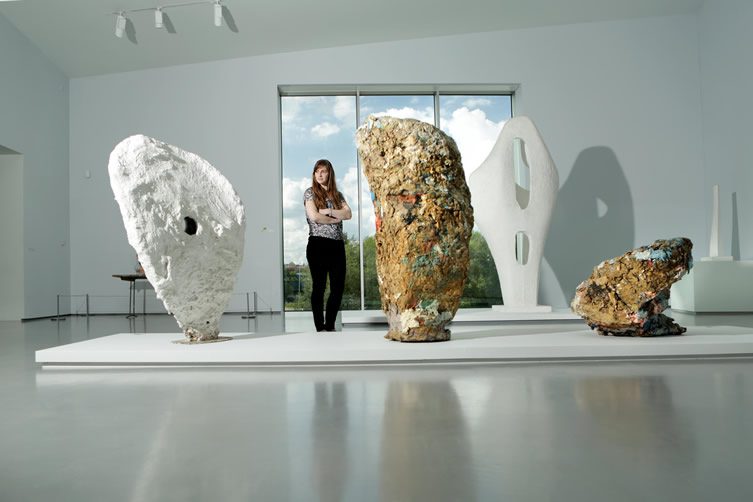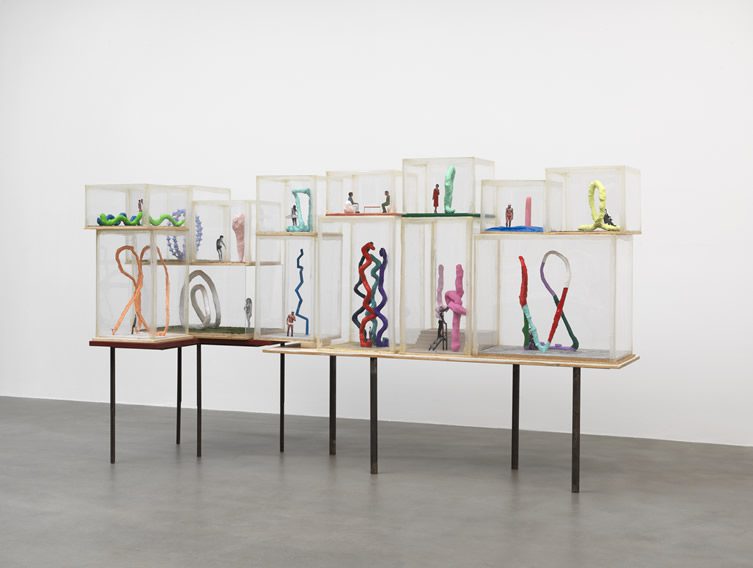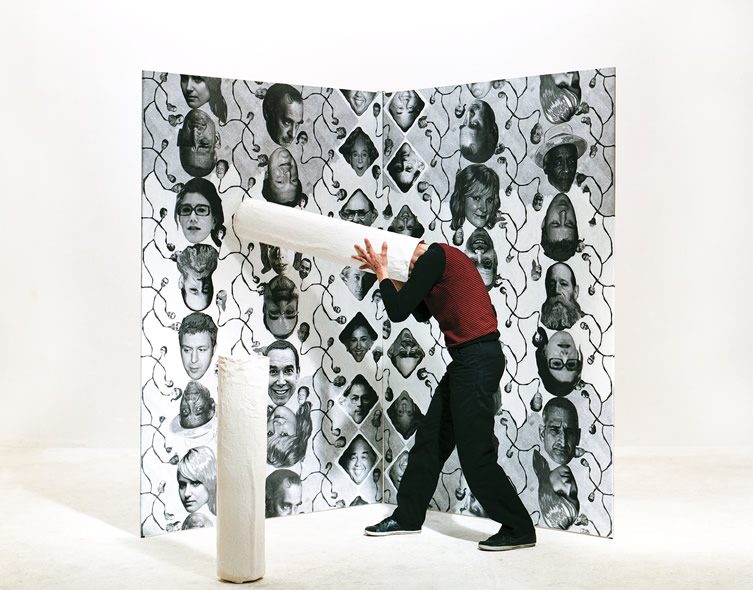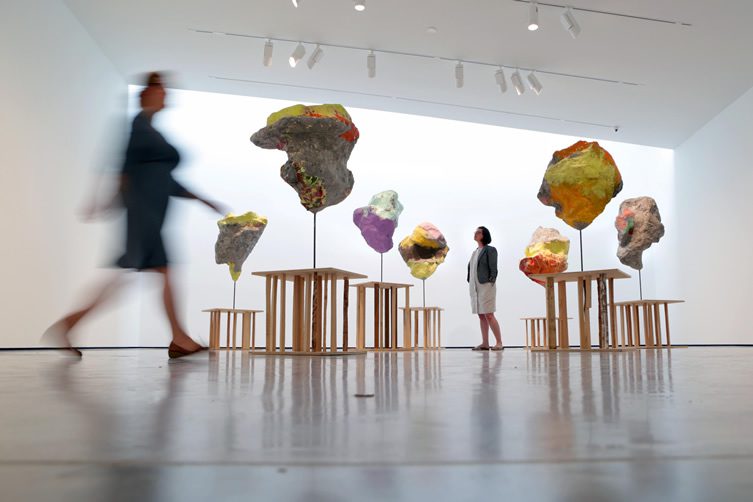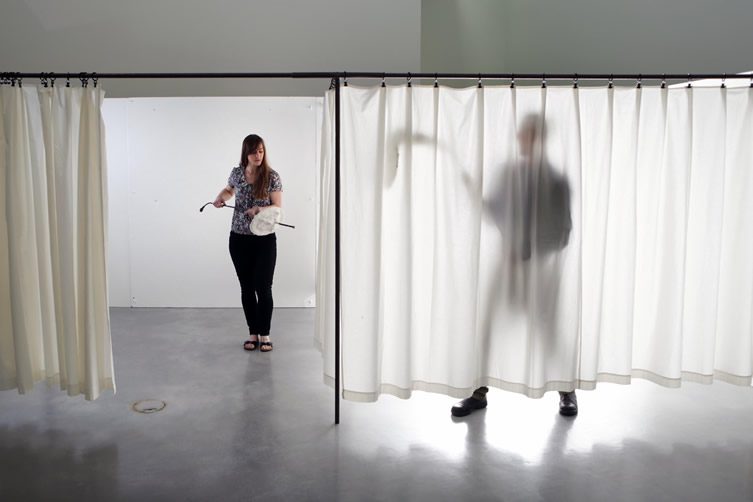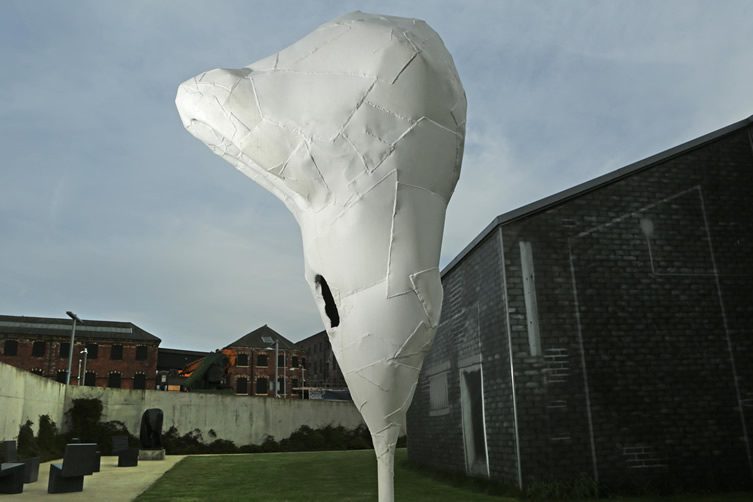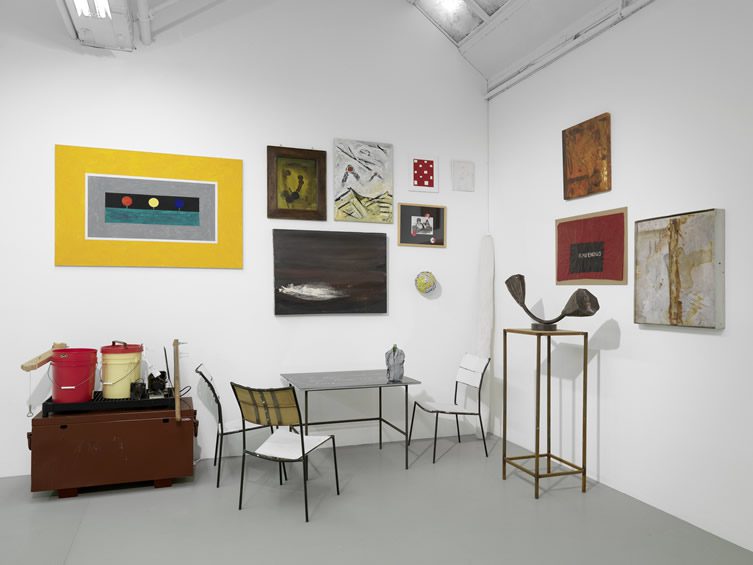At most art galleries, if you picked up the sculptures and started wearing them, you’d be escorted from the building pretty sharpish and possibly sent for some kind of psychological evaluation. But in Where is my Eight?, a new exhibition celebrating the work of late Austrian artist Franz West at the Hepworth Wakefield, that kind of eccentric behaviour is actively encouraged. West is probably best known for his Passstücke (roughly translated as Adaptives) – Papier Mâché wearable forms that resemble protruding skeletal sections or extraneous limbs. West’s thinking was that holding or supporting one of these bizarre additions makes you perceive your own body and your surroundings in a different way. And it’s true, with an extra long collar bone or a cylindrical arm the size of a bollard you do feel self-conscious, mischievous or just plain daft – so much so that the Hepworth Wakefield has provided a curtained area so you can interact with the adaptives in private without fearing a critical gaze.
Self-taught West began practicing in the 1970s, largely reacting to the Vienna Actionists, a disparate group of artists that experimented with performance and public engagement. Whereas their approach was to force their pieces upon participants, West’s method was a lot softer, suggesting people may or may not interact with his sculptures as they pleased. As well as these Passstücke, highlights of the Wakefield show include two similar sculpture clusters, Das Geraune (Murmuring) and Parrhesia (derived from the Greek ‘to speak freely’). Daubed with riotous colours, these rough head-like bundles of Papier Mâché possess bulging features and gaping mouths and appear to be nattering amongst themselves. They shape-shift depending on how you look at them (at some points they’re faces, at others a landscape or exploding nebula) and, given West’s belief that an audience’s response is half of the artwork, their titles are just as likely to refer to your ponderings on what the hell they are as the cheeky chat between murmuring sculptures.
Huge, colourful steel forms fill other parts of the gallery like ginormous Fisher-Price-made microbes, at times giving the Hepworth the feel of a particularly psychedelic children’s play area. Some rooms showcase furniture made by West, including a constellation of brightly coloured sofas where you can tune into Slavoj Žižek talking philosophy or simply watch the water rush over the neighbouring weir. If this sounds like slacking off, know that West would have approved – he believed ambience (even how visitors looked out of the window) was an artist’s utmost concern.
